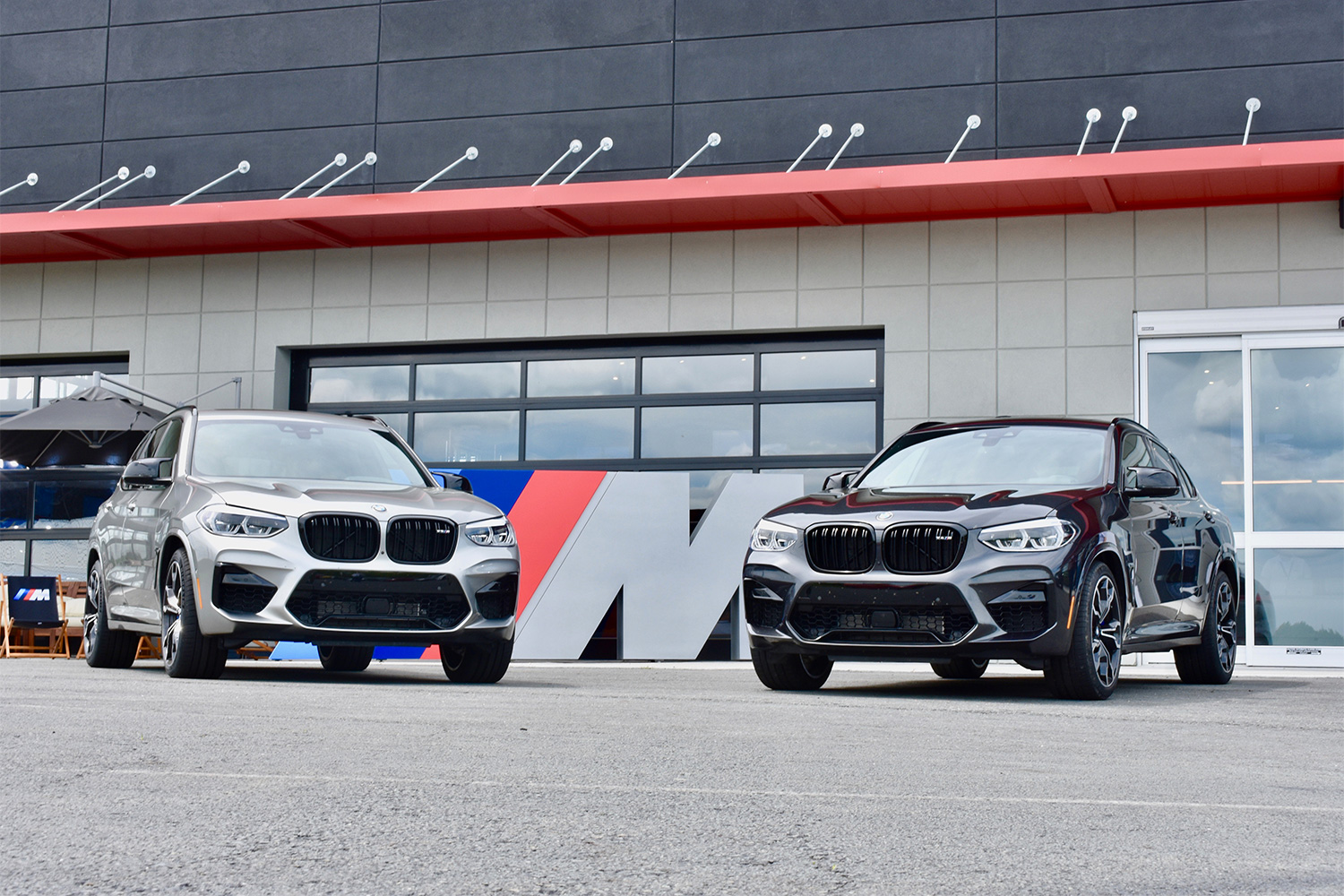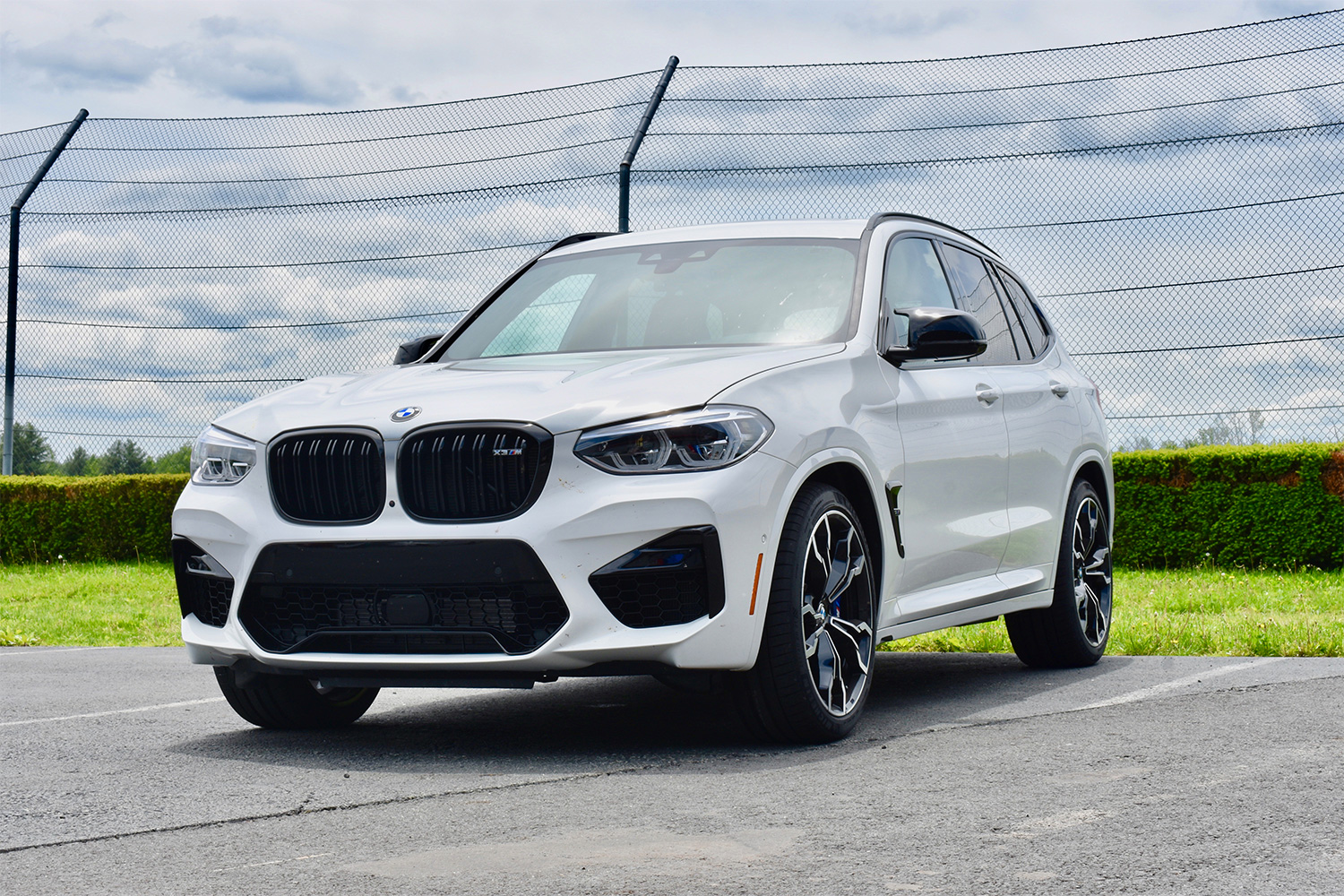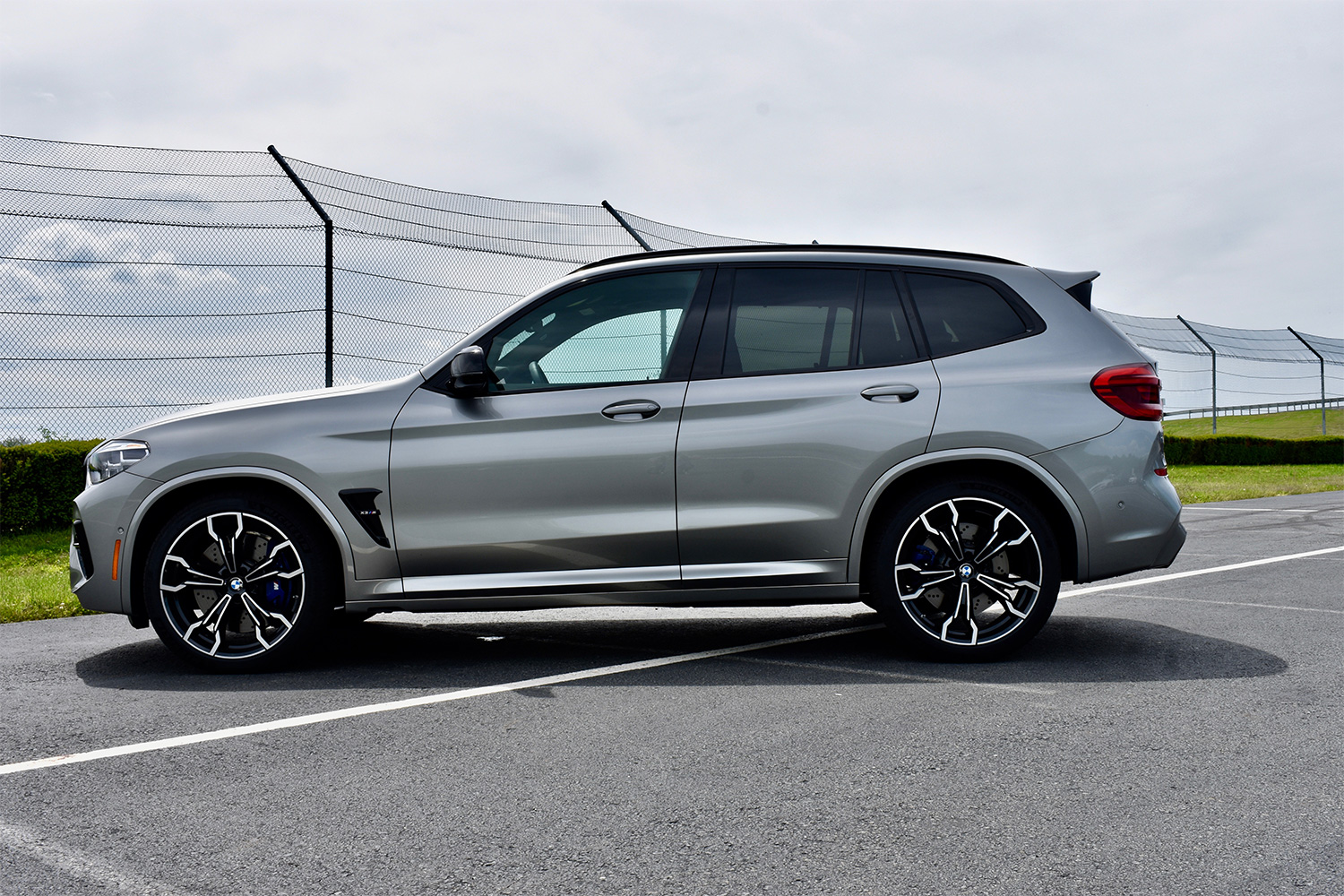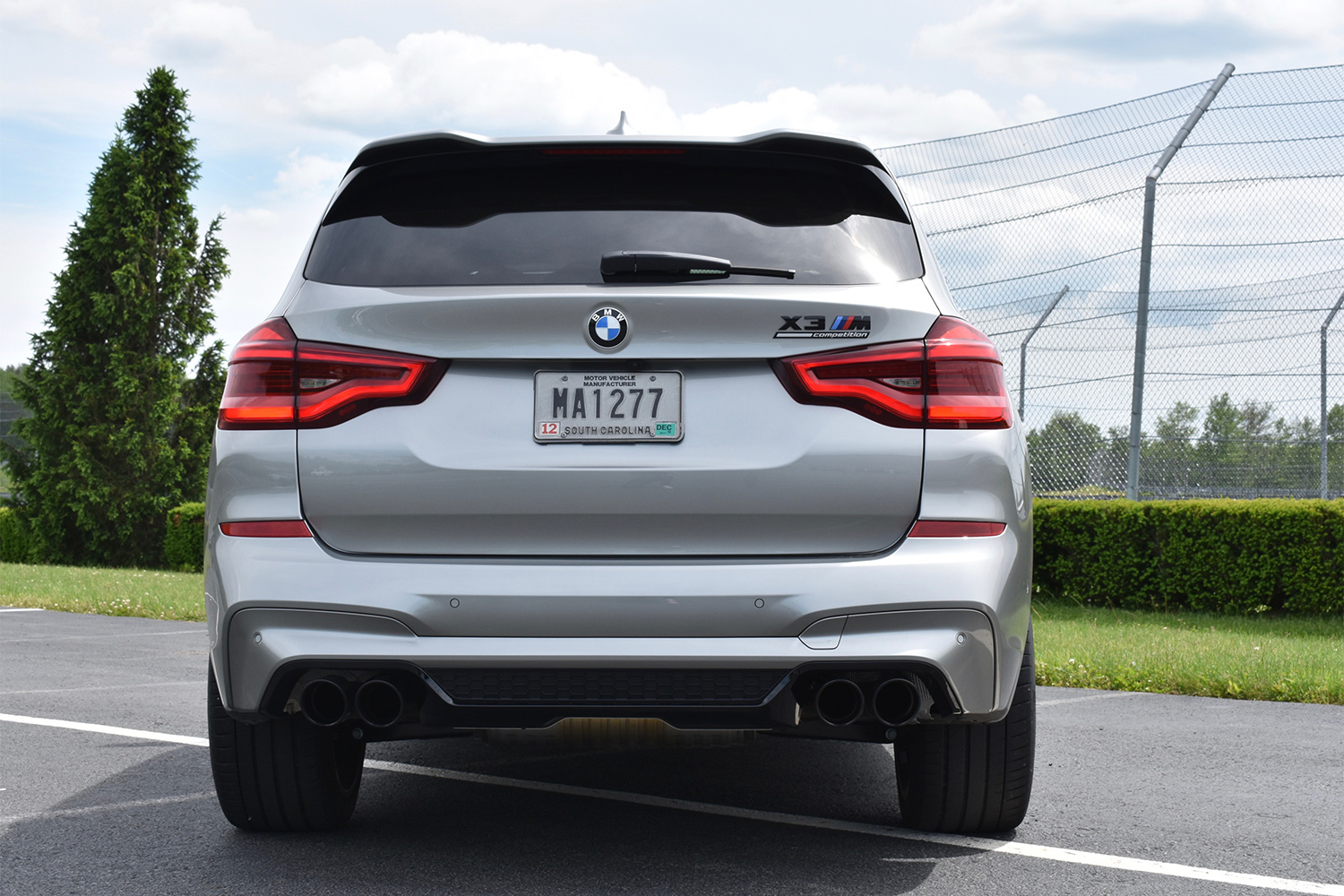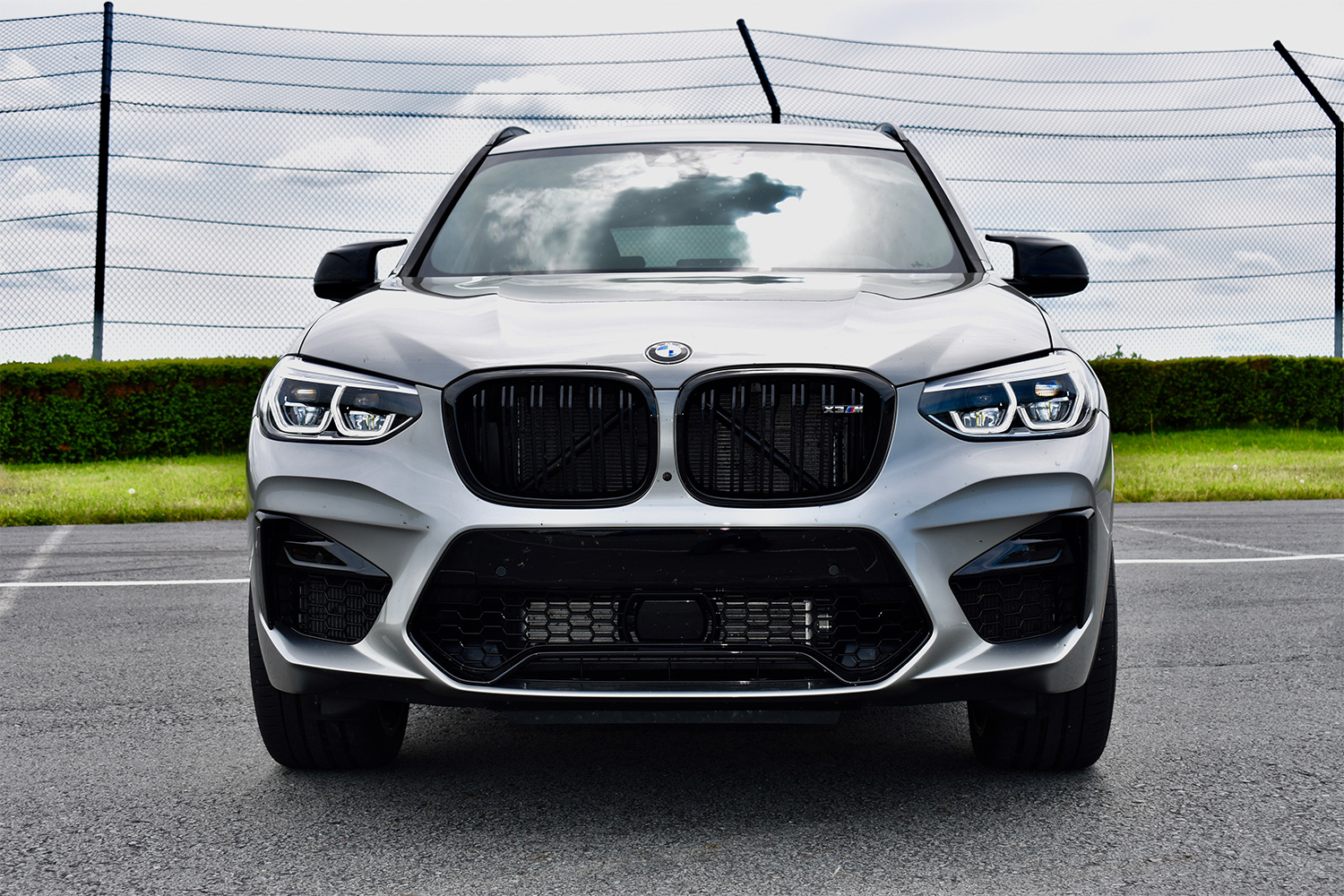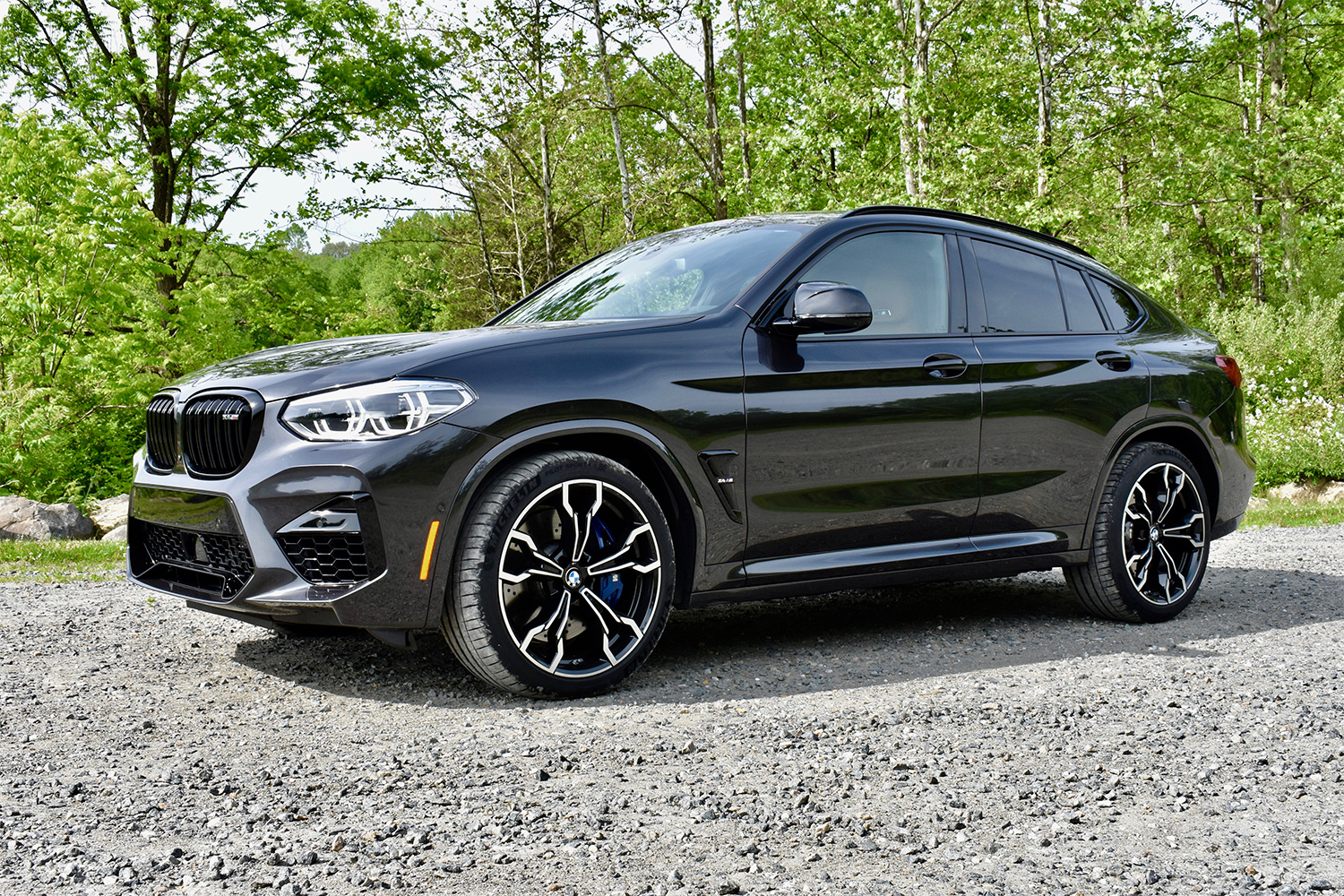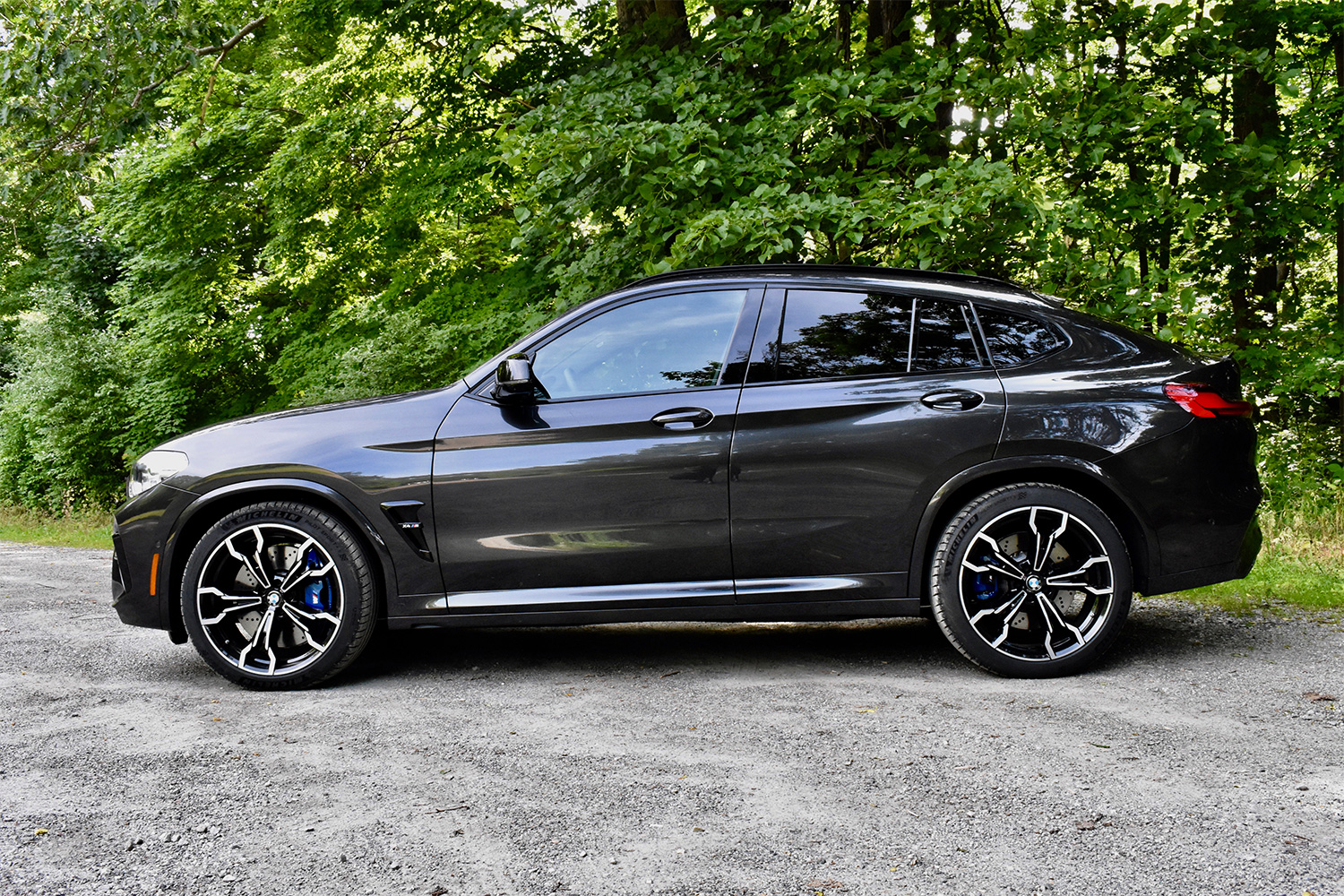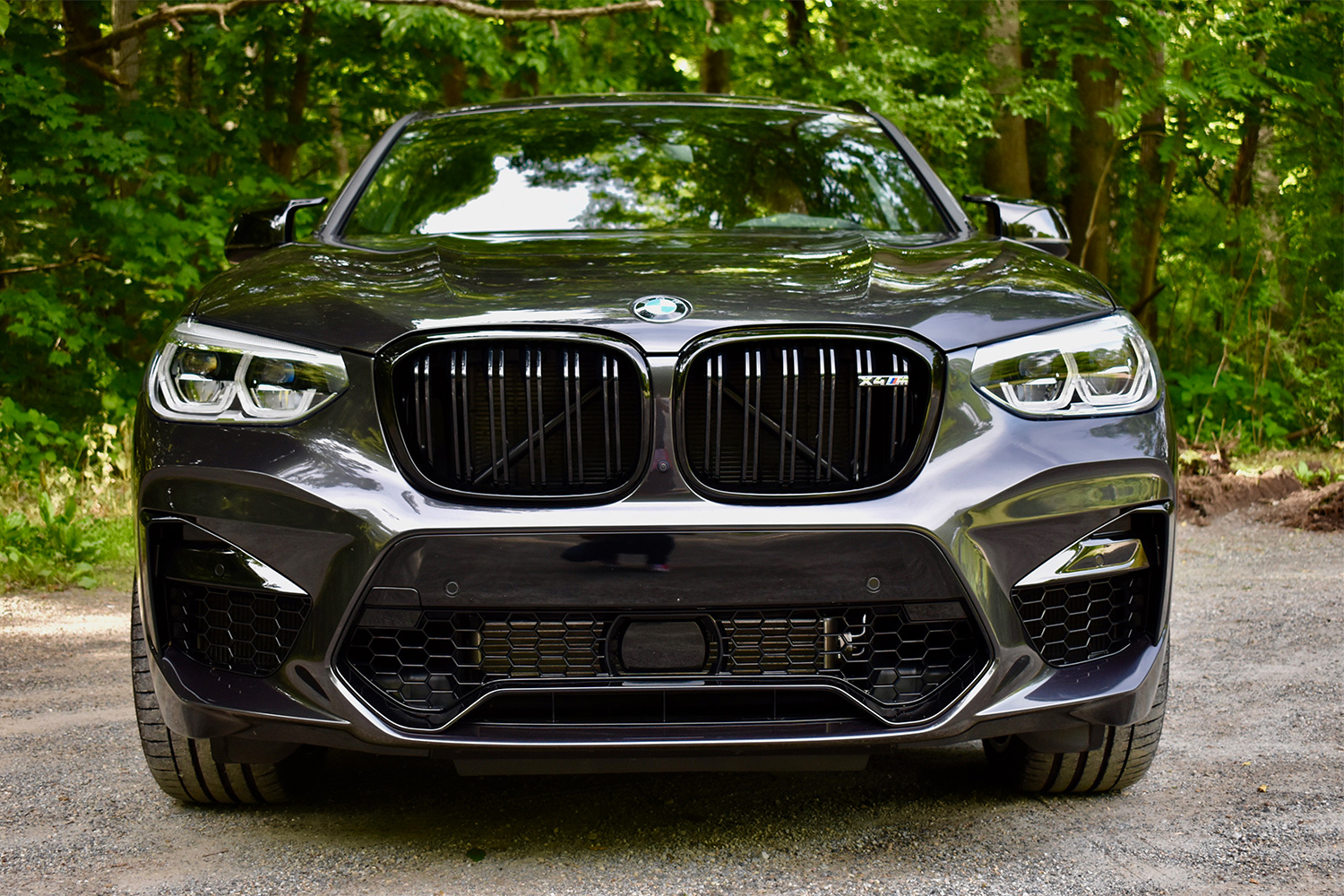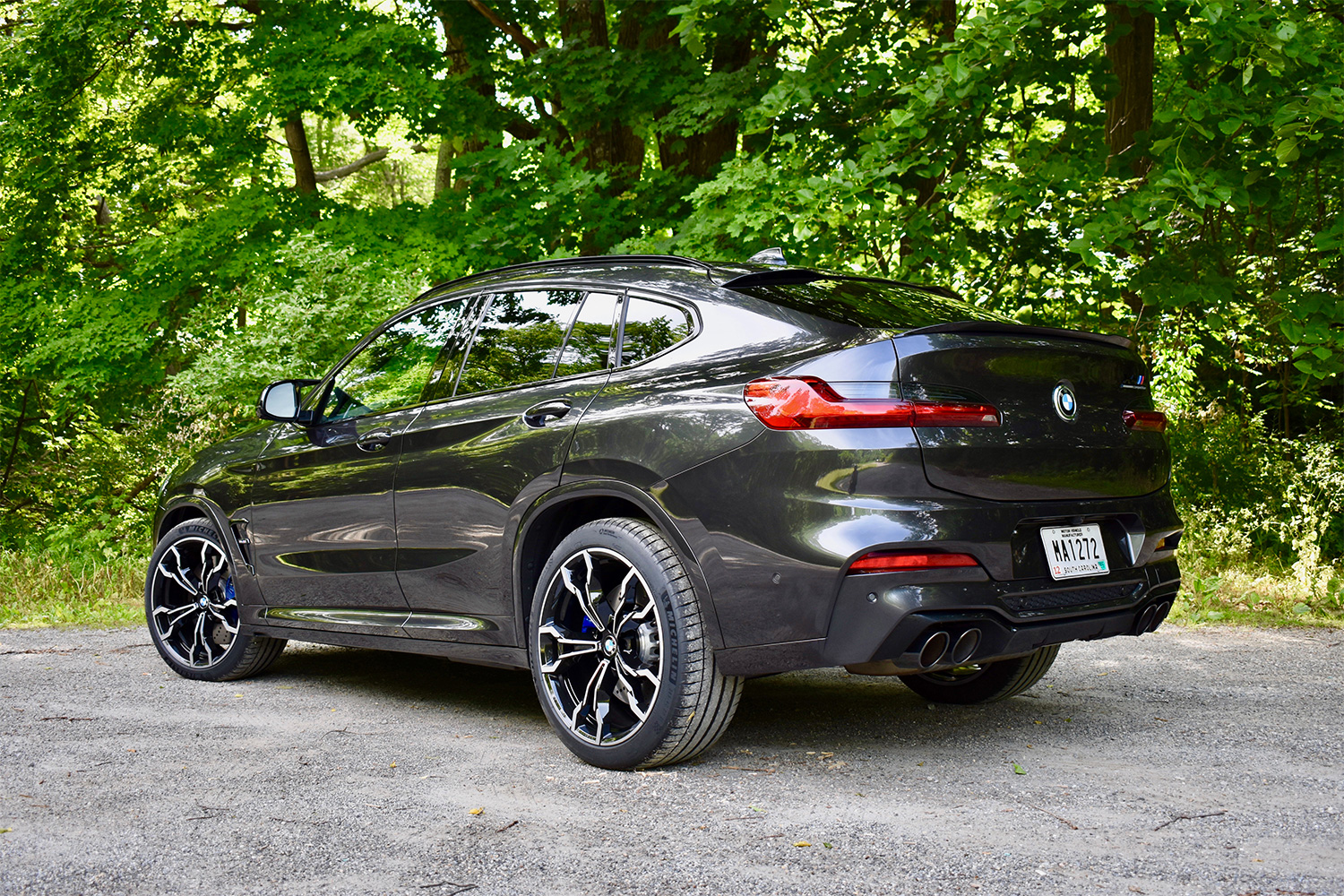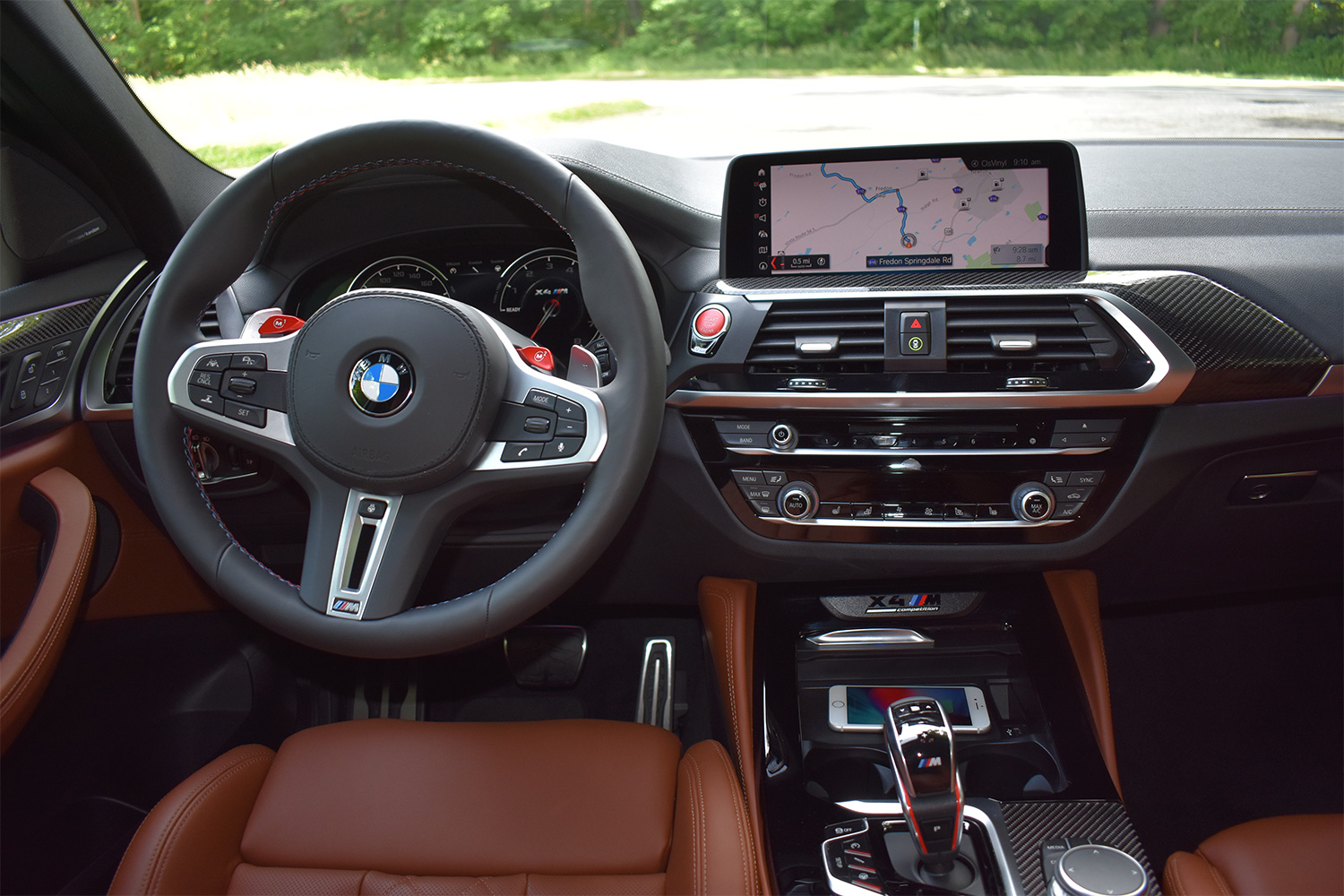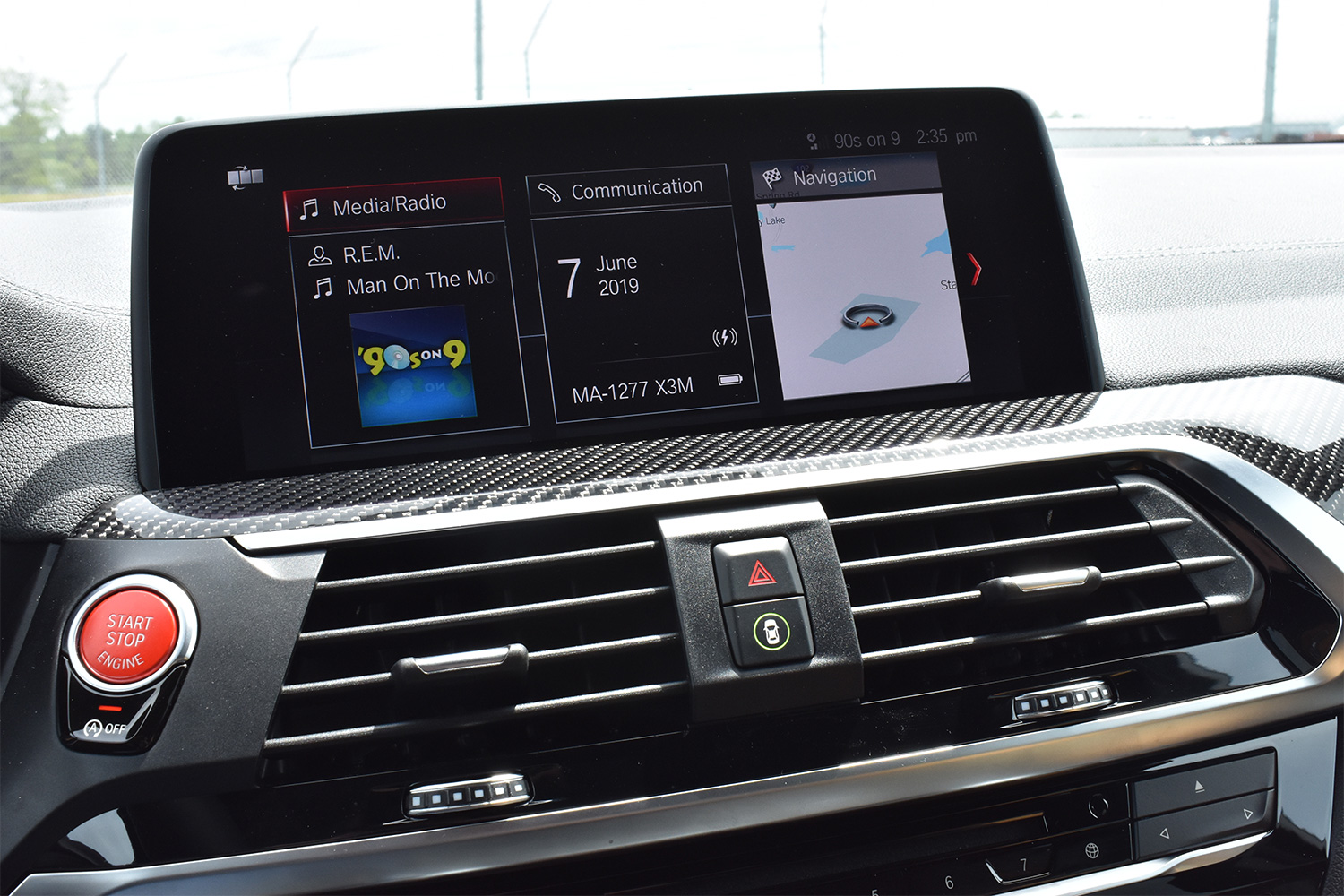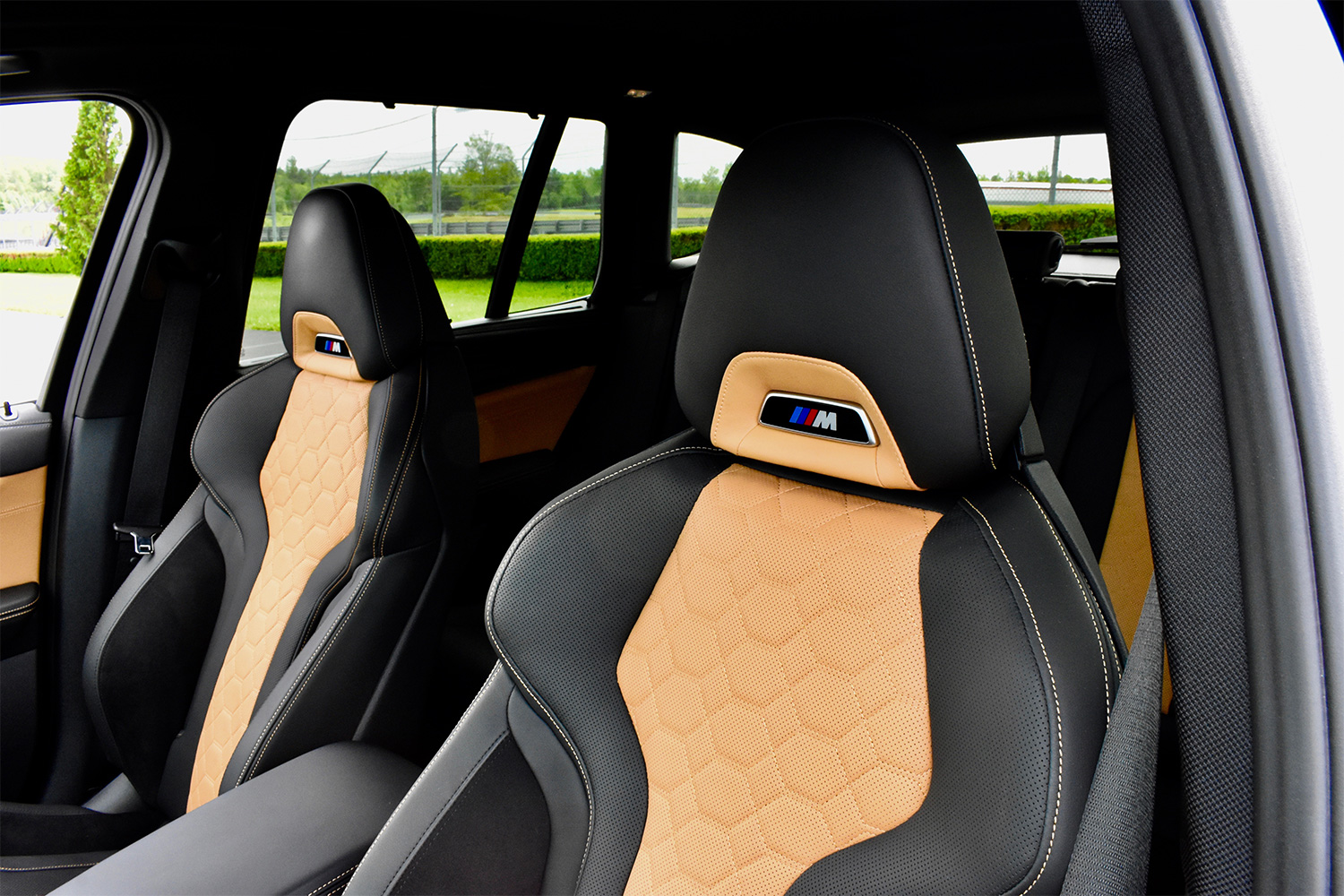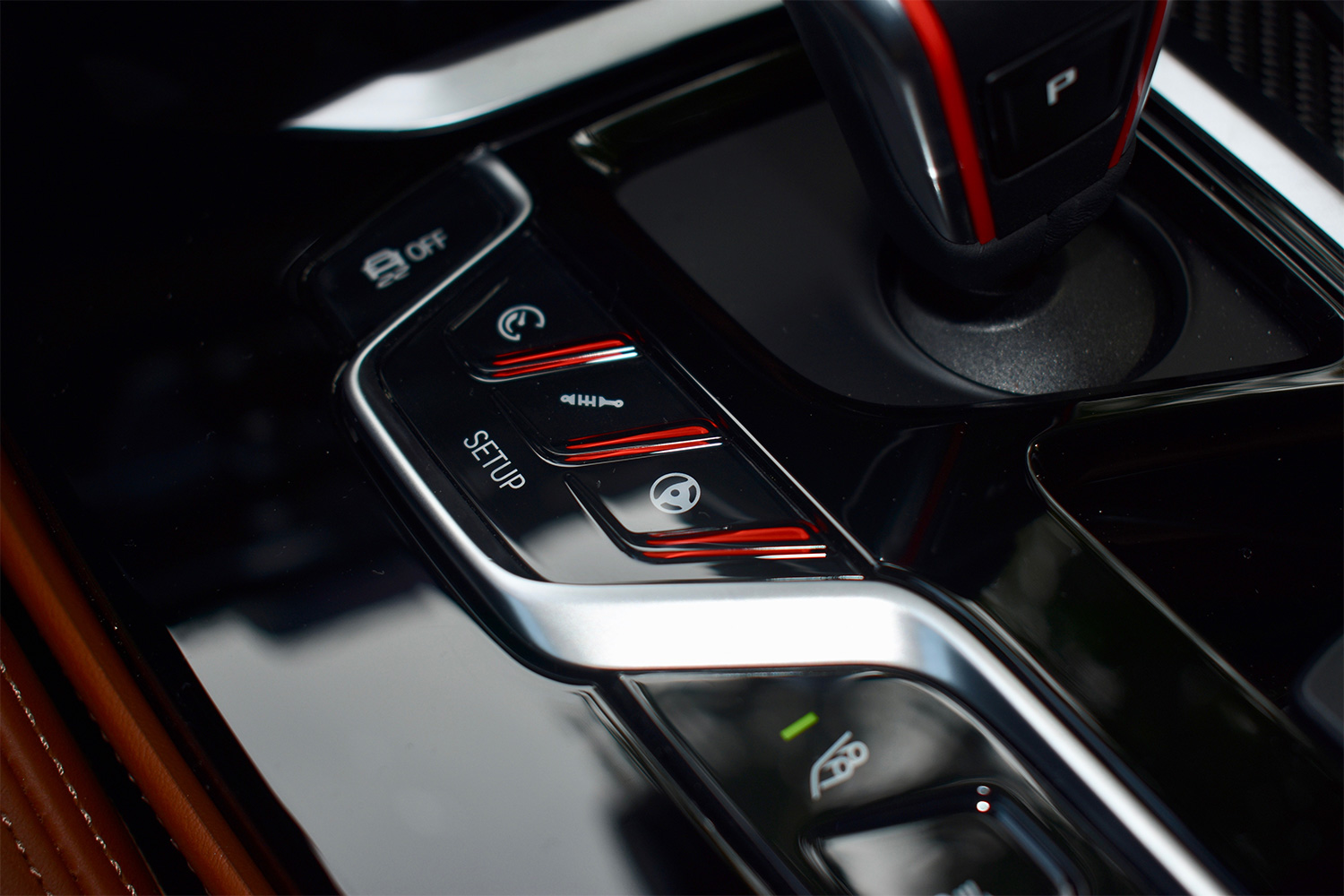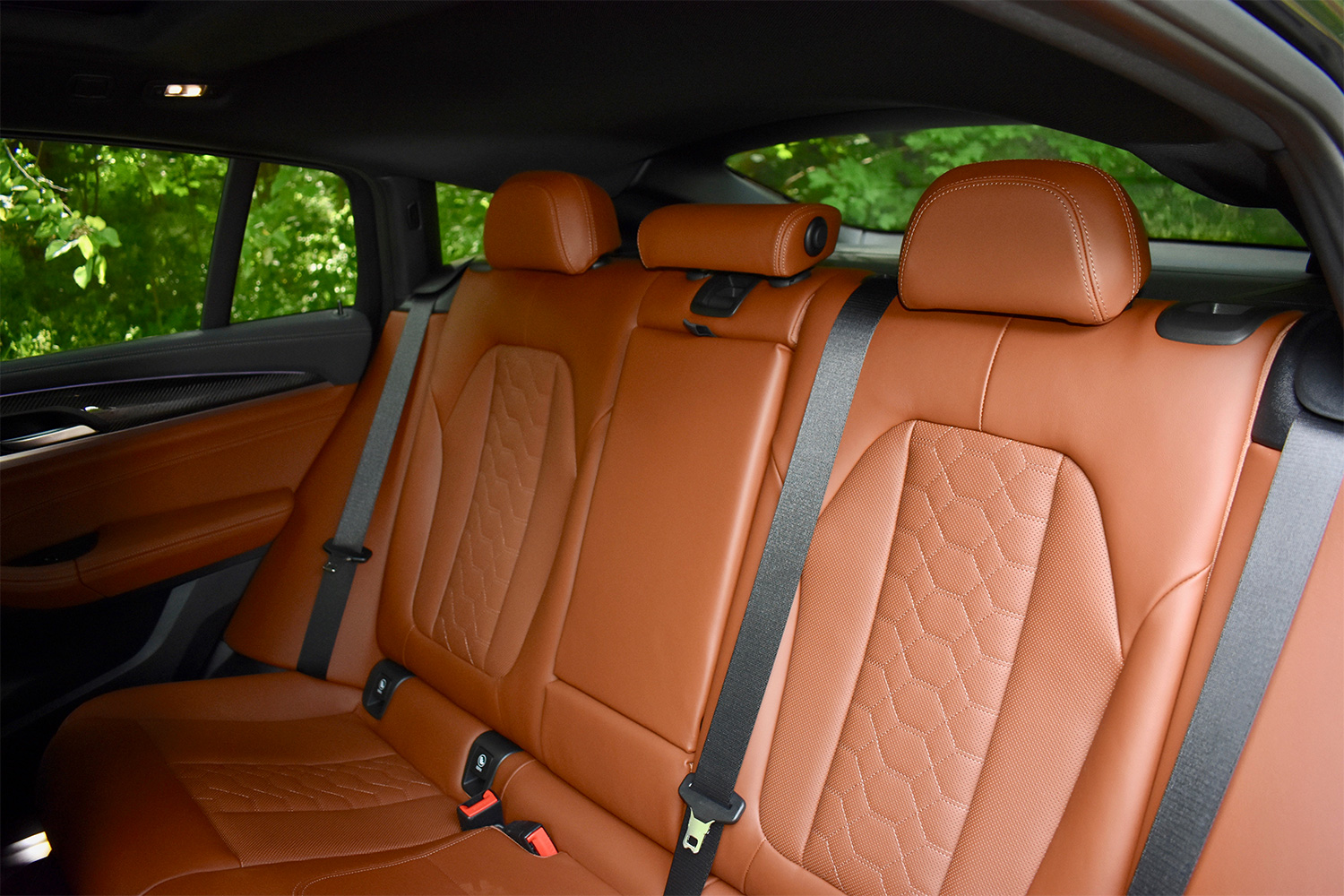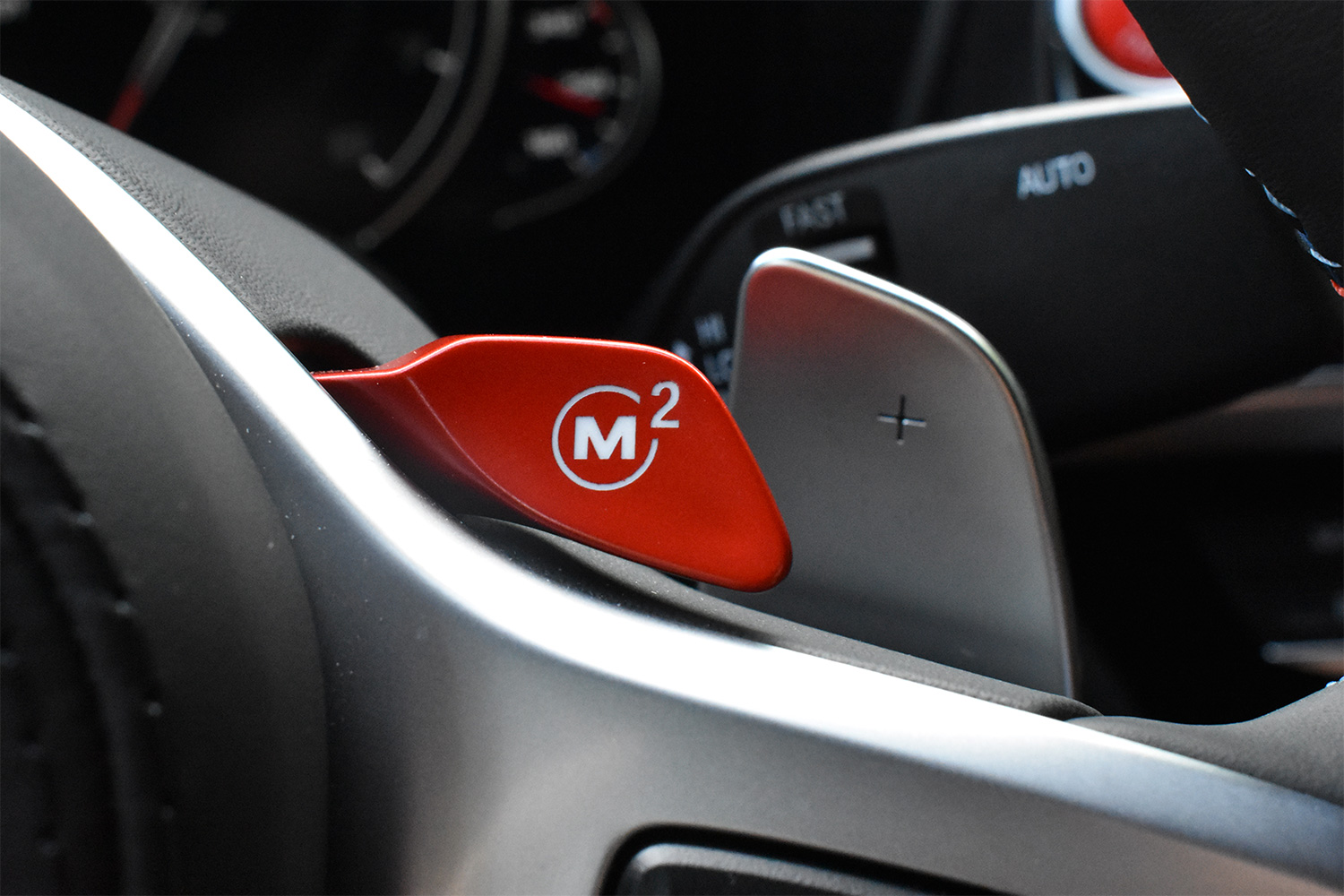The 2020 BMW X3 M and X4 M offer drama-free performance.
A 503-horsepower SUV is an absurd proposition any way you think about it. There are quite a few high-performance SUVs these days, but transforming a mild-mannered grocery getter into a hot rod still defies logic. So the 2020 BMW X3 M and X4 M Competition – the two newest SUVs from BMW’s M performance division – should be pretty bonkers, right?
BMW invited Digital Trends to drive both SUVs around New Jersey and upstate New York, and to flog the X4 M Competition on track at New York’s Monticello Motor Club. Hoping to put its best foot forward, BMW brought us the full-strength Competition models, with the aforementioned 503 ponies. Pricing starts at $77,895 and $81,395 for the X3 and Z4, respectively, including a mandatory $995 destination charges. BMW will also offer less-expensive base models with a more modest 473 hp if you can settle for that.
With both SUVs wearing BMW’s vaunted M badge, and packing serious power, we expected an exciting drive. But vehicles like the X3 M and X4 M need to serve up practicality as well as performance. Was BMW able to deliver on both counts? Let’s find out.
Subtle muscle
The X3 M and X4 M are performance versions of BMW’s existing X3 and X4. The X3 has a conventional SUV shape, with a tall, upright body, while the X4 is considered a “coupe,” and has a low, sloping roof. That’s supposed to make the X4 look more stylish than its X3 sibling. Beauty is in the eye of the beholder, but that roof cuts into rear headroom and cargo space, meaning this SUV is a bit short on utility. It also makes it hard to see out of the back. Because of that, we were very thankful for our test car’s rearview camera and blind spot monitoring.
The styling changes that differentiate the M models from the standard X3 and X4 are subtle. Model-specific wheels (20-inch on base models, 21-inch on Competition models) are one giveaway. Another is the collection of grilles and vents up front, which makes both M models look like they’re trying really hard to make scary faces. For once, this isn’t just for showing off. Everything is functional, feeding air to six radiators that cool the engine and transmission.
BMW tuned the chassis to a level of precision that lets you fling these SUVs around like sports cars.
The interiors of both the X3 M and X4 M are typical BMW, with high-quality materials and a fairly conservative design (BMW does offer optional carbon fiber trim to liven things up a bit). Competition models get standard sport seats with Merino leather upholstery. They’re luxury-car comfortable, but still feature enough side bolstering to keep the driver from sliding around during aggressive cornering. The M-specific shifter is more complicated than it needs to be, but the steering wheel was the perfect size and thickness.
The X3 M interior is also fairly spacious, offering more headroom than a Mercedes-AMG GLC63 and Alfa Romeo Stelvio Quadrifoglio, but less legroom than the Mercedes. The X3 also offers significantly more cargo space than the rival SUVs. The X4 M sacrifices headroom and cargo space for a sportier silhouette, but it’s admittedly not the only vehicle in this segment to make that tradeoff. Mercedes offers a “coupe” version of the GLC63, although up-to-date interior measurements weren’t available for a direct comparison.
Plenty of options
Much of the X3 and X4 M’s iDrive infotainment features carry over from the non-M models. A 10.25-inch central display is backed up by a handy rotary controller and buttons, which make it easier to access crucial menus. Unlike in lesser versions of the X3 and X4, Apple CarPlay is standard, although BMW still doesn’t offer Android Auto. The X3 M and X4 M also get BMW’s gesture control system, which is a bit awkward to use and a liability to anyone who likes to talk with their hands.
M models get a specially configured digital gauge cluster and head-up display. The latter can be programmed to show shift lights and the current gear when the transmission is in manual mode, which makes executing perfect shifts a breeze. The graphics for the digital gauge cluster are clean and very easy to read, and the virtual tachometer even includes a warning light so that the driver doesn’t overstress the engine before it’s properly warmed up.
The driver even gets a button to make the exhaust louder, which your neighbors will love.
Typically for BMW M, the driver gets lots of different vehicle settings to fiddle with. BMW includes multiple settings for the steering, suspension, engine, transmission, and stability control, and all-wheel drive system. The driver even gets a button to make the exhaust louder, which your neighbors will love. As with other M models, drivers can save two personalized combinations of settings, which are accessible through the two red M buttons on the steering wheel.

Despite being pricey luxury cars, the X3 M and X4 M don’t offer many standard driver aids. Both vehicles get standard adaptive cruise control and autonomous emergency braking, but lane departure warning, lane keep assist, and rear cross traffic alert are all optional extras. Many of these features are standard equipment on much cheaper cars. BMW also offers a stop-and-go function for the adaptive cruise control, which allows the car to come to a complete stop and take off again in traffic, but, again, it costs extra.
Real M cars
The engine is the heart of any M car, and BMW threw everything it had at the X3 M and X4 M’s shared 3.0-liter twin-turbocharged inline-six to make sure this engine was the real deal. Codenamed S58, it’s a clean-sheet design according to BMW. Engineers focused on making the engine responsive and eager to rev – qualities not normally associated with turbocharged engines – equipping the S58 with larger-diameter piping to move lots of air at lower pressure, as well as an electronically actuated waste gate.
Competition models makes 503 hp, while base models make 473 hp. Torque output for both versions is 442 pound-feet. Power is fed to all four wheels through an eight-speed automatic transmission. The all-wheel drive system sends most power to the rear wheels to improve handling, but the X3 M and X4 M can’t go full rear-wheel drive like the BMW M5 and M8.
BMW claims both the X3 M Competition and X4 M Competition will do zero to 60 mph in 4.0 seconds flat. Top speed is electronically limited to 155 mph, or 177 mph if you get the optional M Driver’s Package. That makes the X3 M Competition slower to 60 mph than its natural rivals, the Alfa Romeo Stelvio Quadrifoglio (3.6 seconds) and Mercedes-AMG GLC63 (3.8 seconds). Top speeds for the Alfa and Merc are 176 mph and 155 mph, respectively. Mercedes also offers a more powerful S version of the GLC63 coupe, which is the X4 M’s main rival. The S does zero to 60 mph in 3.7 seconds, and has a 174-mph top speed.
They pick up speed in a nonchalant, drama-free way, just getting the job done without shouting about it.
Both the X3 M Competition and X4 M Competition felt plenty quick from behind the wheel, though. Even in heavy SUVs like these, 503 hp is a lot. They pick up speed in a nonchalant, drama-free way, just getting the job done without shouting about it. A little more drama, however, might not have been a bad thing. BMW made a big deal about the S58 engine’s 7,200 rpm redline, but you won’t get the most out of this engine by wringing its neck. We found the engine to be very responsive, but it revved and built power in a restrained, deliberate way – just like many other modern turbocharged engines we’ve experienced.
The X3 and X4 weigh more than conventional cars, and have higher centers of gravity, so they’re not ideal platforms for performance vehicles. The M models do a great job of camouflaging that extra bulk. That’s partly down to the raw power of the engine, but BMW also tuned the chassis to a level of precision that lets you fling these SUVs around like sports cars. The all-wheel drive system offers plenty of grip, and when that grip starts to disappear, the driver gets plenty of advance warning. In Comfort mode, the suspension is luxury-car smooth, but even the firmest Sport Plus setting is tolerable on broken pavement.
It’s an impressive engineering achievement, but not without its imperfections. The steering is quick and precise, but only if left in the default Comfort setting. Sport and Sport Plus add weight, which makes it harder to make small corrections, with no obvious benefit as a tradeoff. The stability control has an M Dynamic Mode that allows some sideways action while still maintaining a safety net. But if the computers think you’ve overdone it, the system cuts back in very abruptly. Above all, the X3 M and X4 M were just too uptight. They’re undeniably competent performance vehicles, but we wish they were more fun.
The average M-car buyer probably isn’t too concerned about gas mileage, but for the record, both the X3 M Competition and X4 M Competition are rated at 16 mpg combined (14 mpg city, 19 mpg highway) by the EPA. The same ratings apply to the non-Competition models.
Rivals
The 2020 BMW X3 M and X4 M have two main rivals at the moment, but there will soon be a third. Porsche will eventually release a hotter version of its recently redesigned Macan, but until it does, your options in the segment are limited.
Alfa Romeo Stelvio Quadrifoglio (base price: $81,590): If BMW appeals to the head, Alfa Romeo appeals to the heart. From its curvaceous exterior to its Ferrari-derived twin-turbo V6, the Stelvio Quadrifoglio aims to stir emotions. However, the Alfa falls well short of BMW on interior space and material quality, and the Stelvio’s infotainment system is just a gussied up version of Chrysler’s Uconnect.
Mercedes-AMG GLC63 and GLC63 coupe (base price: $71,795 and $75,095): Mercedes-AMG’s duo has more charisma than the BMW pair, thanks to AMG’s evergreen 4.0-liter twin-turbo V8. Mercedes offers more imaginative interior designs as well, albeit with an awkward infotainment interface. The GLC63 models will get some updates for 2020, which might change the equation.
Peace of mind
BMW offers a four-year/50,000-mile new car warranty, as well as three years of complimentary scheduled maintenance. While the M models are based on the existing BMW X3 and X4, the number of new components may affect reliability ratings and crash test scores.
How DT would configure this car
First things first: we would take an X3 over an X4. The latter just doesn’t make much sense. If you’re willing to sacrifice utility for style, why not go all the way and get a two-door coupe, like BMW’s own M4? The X3 M offers more practicality than the X4 M, which is the whole point of buying an SUV in the first place.
We would also skip the base model and go straight for the X3 M Competition. It boasts more power (although torque output is unchanged) and more standard equipment. We would add the Driving Assistance Plus Package, to gain the more-advanced adaptive cruise control system, and the Executive Package, in order to get the head-up display, wireless phone charging, and WiFi hotspot.
Conclusion
It’s hard to argue with SUVs that offer this level of performance without compromising real-world usability. What they lack in excitement, the 2020 BMW X3 M and X4 M make up for in competence. High performance SUVs might be absolutely crazy-town, but if you’re going there why not be the mayor?
Editors' Recommendations
- 2023 BMW iX M60 is electric, spacious, and surprisingly quick
- BMW M bundles supercar-like performance into the X5 and the X6
- With up to 617 hp on tap, the 2020 M8 is BMW’s new performance flagship
